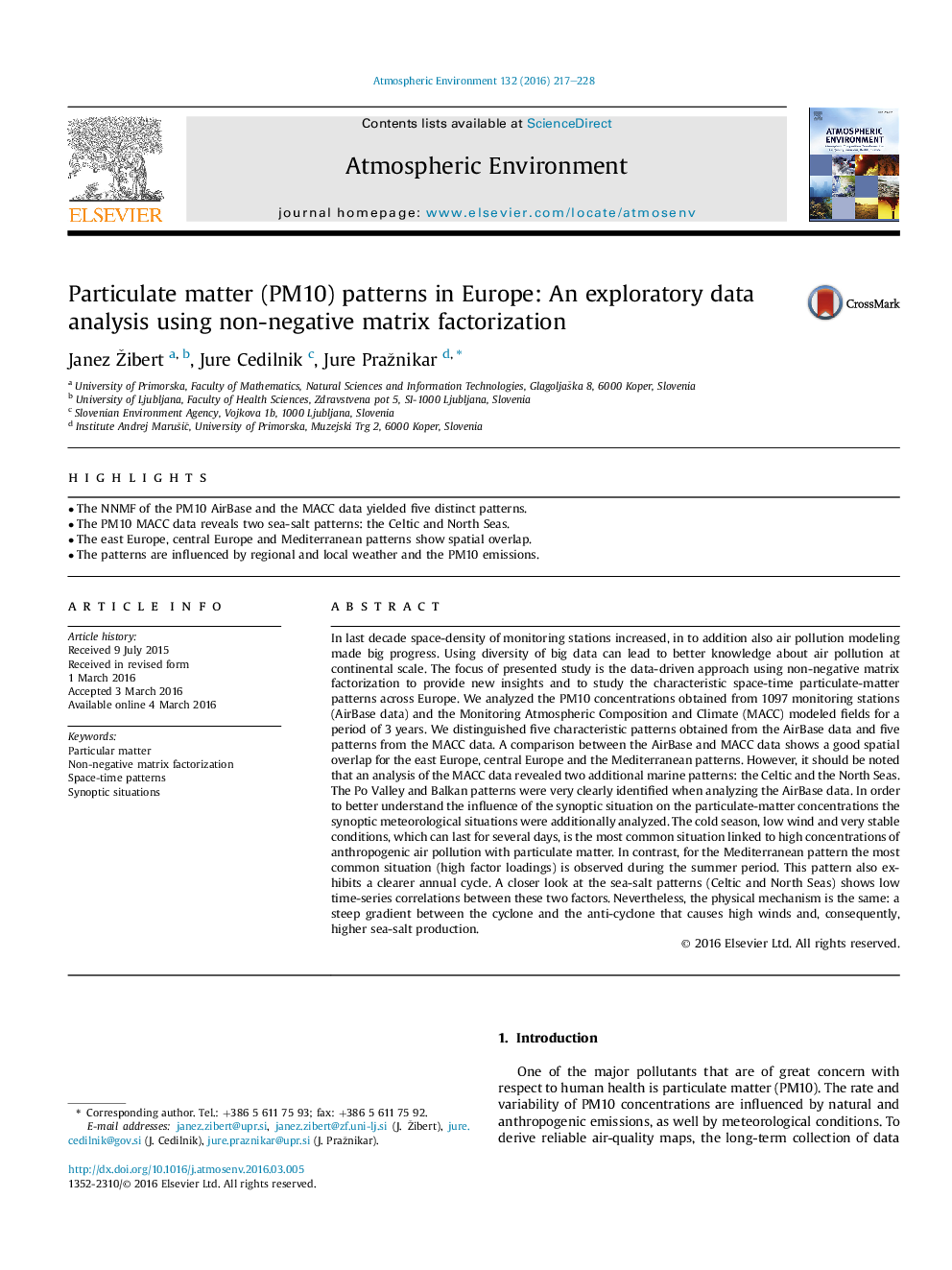| Article ID | Journal | Published Year | Pages | File Type |
|---|---|---|---|---|
| 6336378 | Atmospheric Environment | 2016 | 12 Pages |
â¢The NNMF of the PM10 AirBase and the MACC data yielded five distinct patterns.â¢The PM10 MACC data reveals two sea-salt patterns: the Celtic and North Seas.â¢The east Europe, central Europe and Mediterranean patterns show spatial overlap.â¢The patterns are influenced by regional and local weather and the PM10 emissions.
In last decade space-density of monitoring stations increased, in to addition also air pollution modeling made big progress. Using diversity of big data can lead to better knowledge about air pollution at continental scale. The focus of presented study is the data-driven approach using non-negative matrix factorization to provide new insights and to study the characteristic space-time particulate-matter patterns across Europe. We analyzed the PM10 concentrations obtained from 1097 monitoring stations (AirBase data) and the Monitoring Atmospheric Composition and Climate (MACC) modeled fields for a period of 3 years. We distinguished five characteristic patterns obtained from the AirBase data and five patterns from the MACC data. A comparison between the AirBase and MACC data shows a good spatial overlap for the east Europe, central Europe and the Mediterranean patterns. However, it should be noted that an analysis of the MACC data revealed two additional marine patterns: the Celtic and the North Seas. The Po Valley and Balkan patterns were very clearly identified when analyzing the AirBase data. In order to better understand the influence of the synoptic situation on the particulate-matter concentrations the synoptic meteorological situations were additionally analyzed. The cold season, low wind and very stable conditions, which can last for several days, is the most common situation linked to high concentrations of anthropogenic air pollution with particulate matter. In contrast, for the Mediterranean pattern the most common situation (high factor loadings) is observed during the summer period. This pattern also exhibits a clearer annual cycle. A closer look at the sea-salt patterns (Celtic and North Seas) shows low time-series correlations between these two factors. Nevertheless, the physical mechanism is the same: a steep gradient between the cyclone and the anti-cyclone that causes high winds and, consequently, higher sea-salt production.
